The bladder does not empty completely in women and men: causes, treatment
Both the male and the female part of the population often have a situation where the bladder is not completely emptied. The feeling of incomplete emptying of the bladder occurs if it contains at least 50 ml of urine, the so-called. In the absence of pathological processes, the urge to urinate usually appears when the bladder is filled with urine in a volume of two hundred to two hundred and fifty milliliters. The act of urination is subject to the reflexes of the human body.
How does deurination normally proceed?
During the normal functioning of the body, a number of complementary processes occur that lead to a normal flow of urine. If the bladder is full, then it sends a signal to the central nervous system that it should be emptied of urine. Further, during deurination, the brain sends a command to the sphincter of the bladder and it relaxes, and the muscles contract. Urine flows out of the ureters.
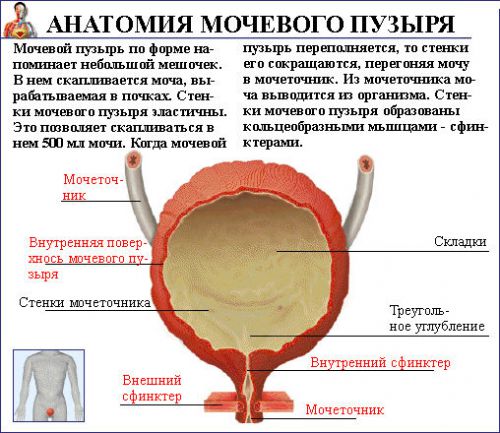
Why does such a pathology appear?
Why is there a feeling of incomplete emptying of the bladder? The reasons for this phenomenon are very diverse. The main ones are:
- cystitis;
- stones in the bladder;
- prostate adenoma and phimosis in men;
- benign tumors and cancer of this organ;
- inflammation in other organs of the small pelvis (there is a reflex excitation of the bladder);
- bladder of small capacity;
- overactive bladder;
- violations of the normal innervation of the pelvic organs as a result of trauma, tumor diseases;
- kidney infections;
- pathology of the nervous system (injuries of the spinal cord and brain, neoplasms in this area, myelitis);
- drug poisoning (with prolonged use of drugs, sleeping pills);
- in women, such an ailment can be when carrying a child, and even after childbirth;
- viral infections (herpes);
- urethral strictures;
- age-related loss of bladder muscle strength.
It is also necessary to say that the feeling of a full bladder can be initiated by alcohol-containing drinks, the effect of low temperatures, and disorders of the normal functioning of the intestines.
Incomplete emptying of the bladder in women most often occurs against the background of inflammation of the genitourinary system.
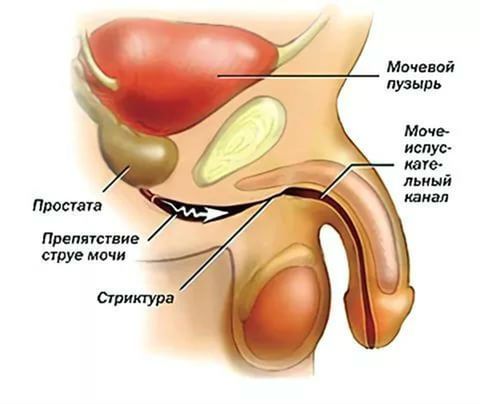
Stricture formations in the channel for deurination
Development mechanism
The mechanism of the development of "illness", in which there is a constant sensation of a full bladder, in many cases can be associated directly with the presence of residual urine in the bladder. As a rule, this situation occurs when the normal flow of urine is interfered with (urethral fusion or calculi).
Also, one of the pathogenetic factors is atony or hypotension of the urinary tract, while the walls of the reservoir cannot contract normally. This situation occurs when interruptions in the mechanism of innervation.
Sometimes the inability to completely empty the urinary reservoir is due to psychological reasons.
Overstretching of the bladder is provoked by various infections. If the fluid is not completely removed, then the muscular frame is stretched, pain occurs, a feeling of fullness over the pubic region. In the future, the emptying bladder is unable to contract normally.
Sometimes the causative factor can be the overactivity of the urine reservoir, this condition is the exact opposite of atony. Then the muscles are constantly in good shape. Because of this, a very frequent desire to urinate occurs, and with a not quite full bladder, a person does not leave the feeling of an unfinished act.
During pregnancy, a violation of the normal functioning of the bladder is due to the fact that the growing fetus presses on nearby structures, and the bladder is activated, it does not have time to adapt to more intensive work.
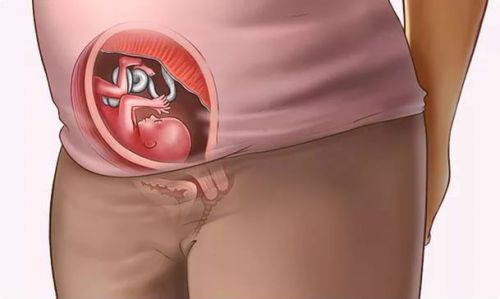
Therapeutic measures in pregnant women are carried out purely in stationary conditions.
An age-related decrease in the tone of the muscle layer of the bladder also becomes a common cause of the disease, usually people whose age has crossed the line of 60 years suffer from this type of disorder.
Types of pathology
The pathological process can be of two types:
- complete retention of urine (with this variety, a sick person is unable to excrete even a milliliter of urine). There are urges, but it is impossible to release the bubble. Such patients are compelled to resort to emptying by means of a catheter;
- incomplete retention (emptying of the bladder is carried out, but due to some factors the act is not completed), little urine is excreted;
- residual urine (a disease in which there is an interruption of the initially normal act of urination with the inability to continue it).
With successful treatment, it is possible to prevent chronic disease.
Symptoms
Symptoms of a full bladder are frequent urges to urinate, they can occur immediately after the end of deurination. Sensation of a full bladder after urination. The process itself is accompanied by soreness, burning, discomfort, heaviness over the pubic area. This is due to the stretching of the walls of the bladder with a large amount of fluid.
We should not forget about the psychological component. Even in the presence of an empty bladder, the patient is restless, he cannot move far from the restroom, do routine chores. This leads to fatigue, irritability, aggressiveness.
There are also specific signs of the disease that leads to such a pathology. With prostatitis in men, there is an intermittent stream of urine, impotence, urine leakage. If there is a malignant neoplasm of the prostate gland, then the patient loses weight, he has no appetite.
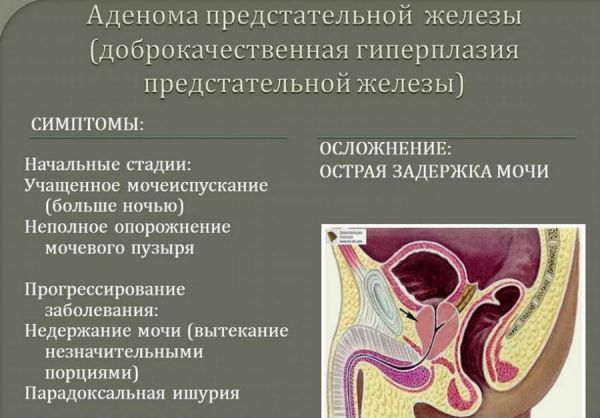
With urolithiasis, cramping pains are present, especially if the calculus moves along the urinary tract. There is a sediment in the urine, there is hematuria.
Glomerulonephritis and pyelonephritis are characterized by the fact that there is pain in the lower back, fever is possible, a change in the composition of urine. With glomerulonephritis, blood impurities are observed in the urine.
Cystitis and urethritis are distinguished by the fact that the patient has a frequent desire to urinate, during the emptying of the bladder there is pain, burning. Characterized by hyperthermia.
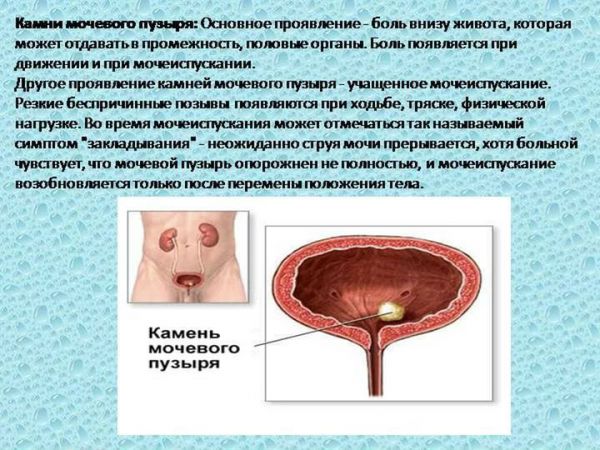
Establishing diagnosis
Finding out the causes of this state consists of many stages. First of all, the doctor collects an anamnesis, he asks the patient in detail about the symptoms of the disease, about what preceded such a condition, also about all chronic diseases, about the surgeries. A woman needs to talk about her last birth, menstrual cycle.
The doctor also palpates the location of the bladder, if it is actually full, then the specialist will easily determine this by touch, it will bulge. Based on the examination, the doctor can suggest why there is a feeling of fullness of the bladder, what studies to prescribe.
Of the diagnostic methods, a general blood and urine test, blood biochemistry, urine culture for microflora, cystoscopic, urographic, and ultrasound examination of the pelvic area are used. If these methods are ineffective, CT, MRI, isotope techniques are prescribed.
Healing Approaches
Treatment of this pathology begins with the elimination of the root cause of the disease. If an infection is the factor causing the feeling of a full bladder, then antibacterial or antiviral therapy is mandatory. In the presence of urolithiasis, the doctor prescribes drugs that can dissolve small stones. If the size of the stones is large, then crushing of the stones is used.
In the case of urethral stricture, the only way to solve the problem is the surgical way to solve the problem.
If the disease is explained by a psychological factor, then the patient is prescribed sedatives, psychotherapy is recommended.
In the case of benign and malignant formations, the tumor is excised, and when malignancy is confirmed, chemotherapy and radiological exposure are used.
There are a number of ways to diagnose the causes of the sensation of a full bladder, which can significantly improve the well-being of a sick person:
- when urinating, you need to relax, do not compress the muscles of the bladder and abdomen;
- be sure to retire and find the most comfortable place;
- you can not rush, as it is difficult to empty the bladder;
- pressure with the palm of the suprapubic region leads to the fact that it will become much easier to empty;
- to stimulate deurination, you can use the sound of water that pours;
- during the act of emptying an overflowing bladder, the process must not be interrupted (some use this technique as a training), as this creates even more disruption.
If all of the above methods are ineffective, then the doctor will place a urinary catheter.
In acute urinary retention, emergency catheterization is performed. The external opening of the urethra is disinfected, lubricated with petroleum jelly, and then a catheter is inserted, then its terminal part is inflated. With this, it is fixed. An exception is situations in which the cause of the disease is prostatitis or calculi. In this case, the catheter is prohibited for use, as it can aggravate the process.
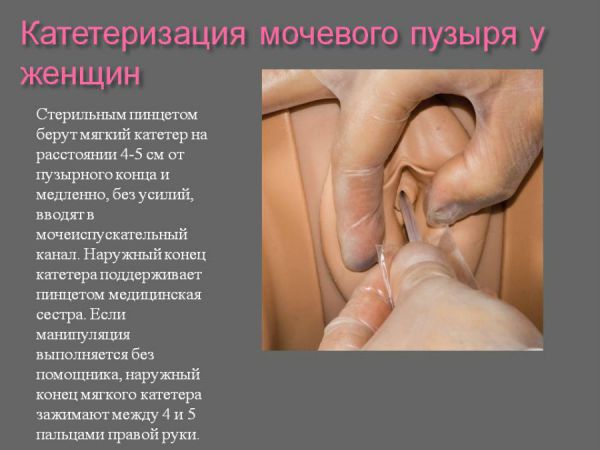
Conclusion
The feeling of a full bladder is a big problem that needs attention. The success of the treatment directly depends on the correct diagnosis. Untimely and incorrectly selected therapy can lead to serious complications, which will be very difficult to cope with. That is why the treatment of such a "ailment" should be dealt with by a doctor. Be healthy.




